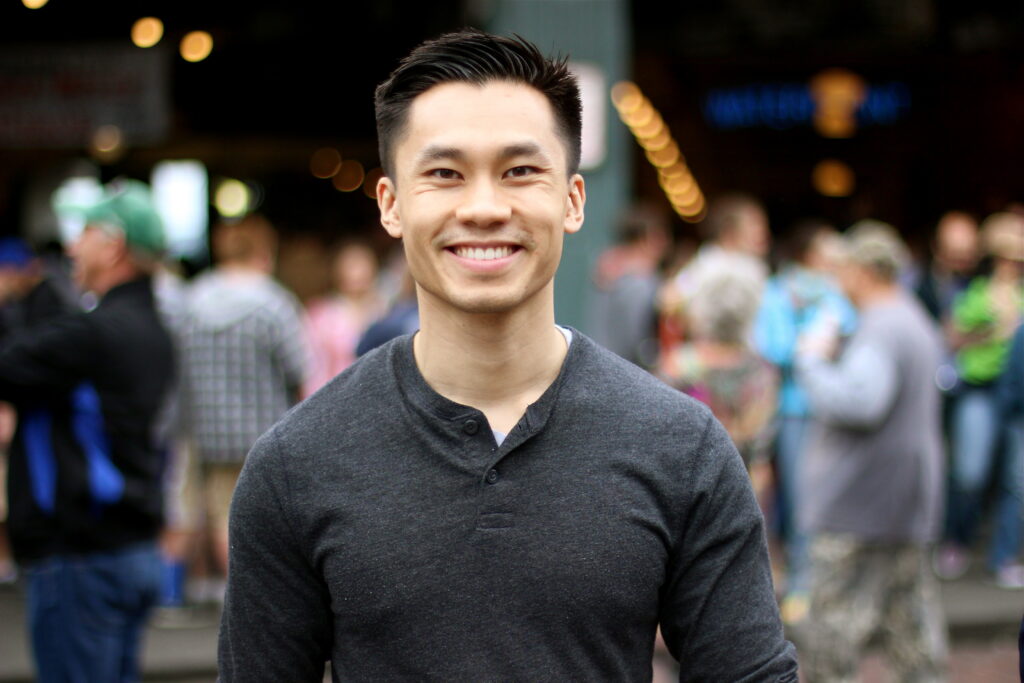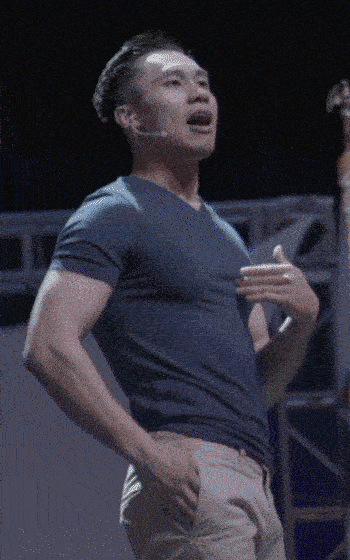May is Mental Health Awareness Month, and although we are nearing the end of the month, we are in a time of uncertainty moving forward in the face of COVID-19. Now more than ever we need tools and inspiration to keep our physical and mental health in balance as we navigate our way through change.
Two years ago Hoan had the opportunity to speak on live tv with Margaret Larson, host of New Day Northwest. She and Hoan discussed the importance of and the relationship between physical and mental fitness.
Margaret started the conversation by asking Hoan how he became involved with American Ninja Warrior. Hoan described a moment navigating the peg wall at his cousin’s crossfit gym, while his cousin shot a photo of him, then posted it to social media with the caption, Hoan Do beastin’ the peg wall! #American Ninja Warrior. After seeing this post, American Ninja Warrior invited Hoan to compete in season 6, and so started the rigorous training, not only physically but mentally as well.
There were many challenges along the way, including the 2am time slot for competing, the hours of training, managing to navigate and work through an injury, and all of the positive self-talk and mental acuity required to work towards a goal.
Margaret asked Hoan to talk about everything involved in what it takes to compete. Hoan mentioned that it takes every aspect of fitness. She then asked him to describe how he incorporates physical and mental fitness into what he teaches students and business professionals. Hoan described three exercises he does during training and the dedication to form and focus.
Margaret asked, “talk about mental fitness, because a lot of this really is what you are willing to do.”
“A lot of it is pushing past what we think is possible.” Hoan describes his analogy of the mind playing radio stations in our heads. When there is a song playing that we like, we turn it up or sing or dance. And when there is a song we don’t like, that often has the message, “you’re not smart enough, you’re not good enough, you don’t have enough experience, you’re too old, you’re too young,” we need to change the station.
“My goal is to teach people how to change that radio station in their head.”
Margaret chimes in saying, “and what do you do with that…especially when you are talking with young people who don’t have a lot of experience with the ups and downs of life, how do you approach that with them?”
“…it’s taking real life examples and sharing it in a way that resonates with them…I try to speak their language, share personal life experiences, but more importantly, share interactive experiences to help them just to change their attitude, not just to talking about it.”
Maraget asks Hoan to explain what he tells himself when he hits a wall with a certain challenge. Hoan responded by saying, “…for me it’s taking that moment where the technique to change the station, usually I’d say,“hold up, that is whack!” “…it makes you laugh so you take a mental step back, go into your long term memory and remind yourself of the amazing things you have done, to give yourself confidence to deal with present day challenges.”
We all have stories and messages playing in our heads, and during times that challenge our mental health, our physical surroundings, our ways of life, it is crucial that we pay attention and learn how to change the station so that we may thrive.


